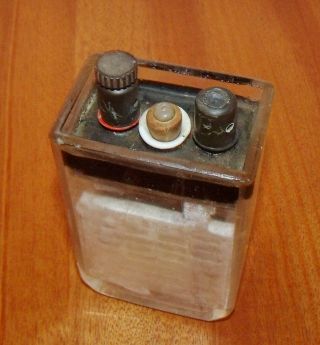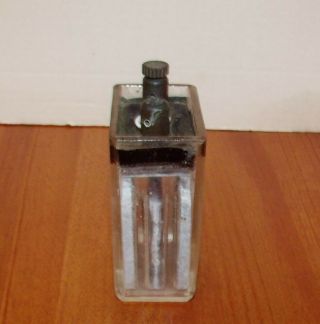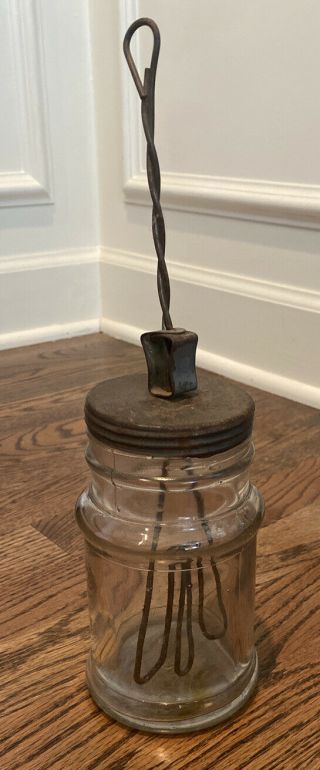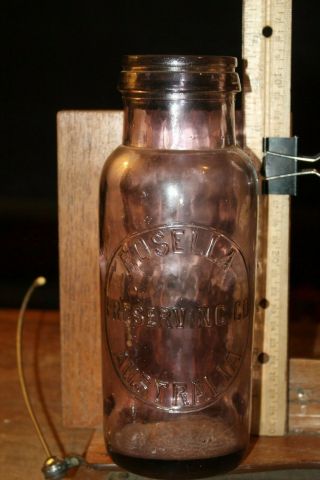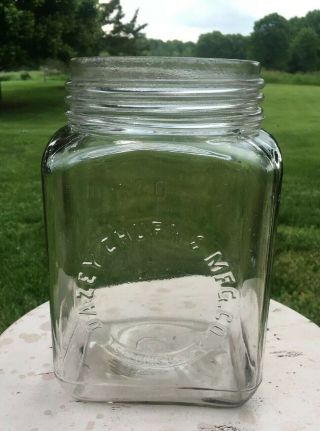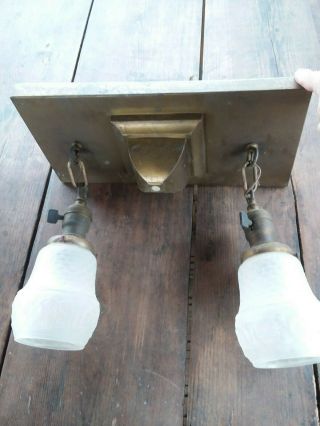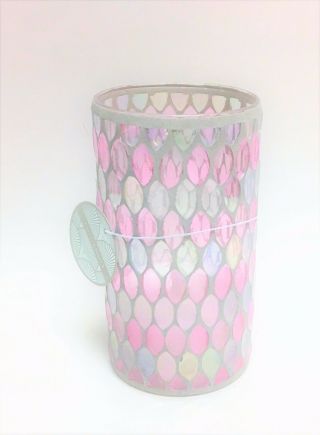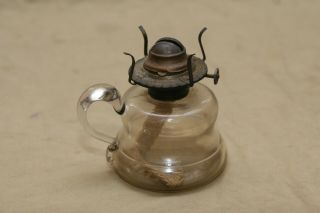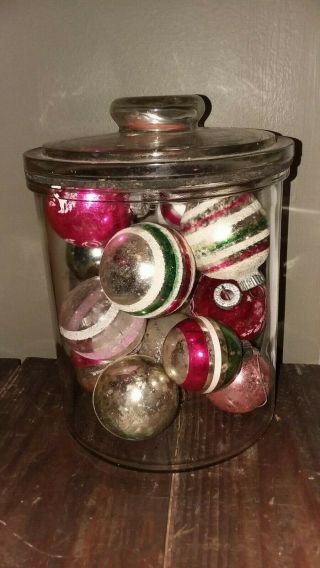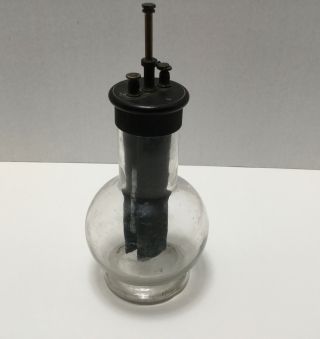1916 Primitive Antique Glass Jar Farm Lighting Battery Cell W/Pos. /Neg. Terminal
Item History & Price
Up for auction is a very, very, rare glass jar farm lighting cell that dates (1916-1939). It is one cell from a much larger battery pack that contains eight of these glass jar cells resting on a wooden rack with two shelves on it. Each of the eight cells are placed on a wooden rack because wood does not conduct electricity like metal does causing an dangerous electric shock. Each cell is joined to together by the positive and negative terminals on each one and... when all eight are joined together they become a storage battery that stores battery power for awhile and this eight cell battery pack can be recharged if needed. When all eight cells are fully charged they provide enough electrical current to spark and start an electrical generator run by gasoline. Once the generator is started the generator provides enough electrical current to spark and start up farm machinery, electrical lighting in a barn, and household electricity too. By 1926 most larger cities and towns had electricity installed in their homes and businesses by public utility companies however, outlying areas like farms and homes did not get billable working electricity until about 1940. Natural gas lighting was popular in large cities too but very dangerous and again, was replaced by electricity by 1926. Farmers and rural dwellers had to rely on kerosene lamps and glass farm lighting batteries with eight cells like the cell in this listing to power their generators, farm equipment especially water pumps to pump water to water their farm fields and livestock. Door-to-door salesmen went about selling these bulky wooden stands with their eight cells to farmers and rural dwellers promising great things like starting up their grain elevators, tractors, tilling equipment, flowing water into irrigation ditches, and even giving the American housewife a few breaks like powering appliances like toasters, coffee pots, waffle irons, clothing irons and a host of other electrical appliances to make Mom's life a little easier for her.The cell is made up of seven parts. 1) Looking downward in picture #2 on the top left is the positive terminal with a thumb screw on top of it that screws clockwise/counterclockwise where a copper wire with red insulation on it is connected to this terminal by unscrewing the thumb screw and threading the copper wire into a small hole and then screwing the thumb screw clockwise until it stops. 2) On the far right is the negative terminal where the copper wire with black insulation on it is connected to this terminal by threading the copper wire into a small hole and gently resting it there and this is the ground wire to prevent electric shock from occurring. 3) Dead center in the middle is a vent cap that prevents the batteries contents from exploding and the vent cap has a small glass bulb on top of it with a tiny pin hole in it and the bulb rests in a wood setting and this wooden piece rests on a white porcelain washer again to protect from electrical shock as porcelain does not conduct electricity. 4) All three of these components on top are sunk into a piece of molded black rubber sealing the glass jar below it; again to prevent explosion and there is a thin piece of the same rubber that runs clear through to the bottom of the inside of the glass jar that is called a rubber separator. 5) Inside the jar looking it at it from the left side view (pictured #3) is a positive plate on the left and in between the rubber separator is the negative plate on the right and the plates are made from silver and zinc as they resist water corrosion and the glass jar of this cell is filled with distilled water before it is sealed. 6) The jar is made from clear lead crystal glass that will not conduct electricity and cause a shock and it is also made this way so that a farmer can see that the water levels in all eight cells are equal to each other. 7) When all eight cells are filled with water and all eight cells, like the one in this listing, are joined together by connecting their positive and negative terminals together a nice 1.210-1.250 volt battery is established for the farmer to use as he pleases. With out this invention years would have passed before rural farmers and dwellers had any electricity at all which could have had disastrous effects on our countries agricultural economy and as the 'Great Depression' was waning in the late 1930's we would have had massive food shortages in our country.Today, glass farming lighting cells or complete eight cell battery packs are somewhat of an anomaly as most of them were discarded when America was 100% electrified or shortly thereafter. Most of them are in museums like the Smithsonian Museum in Washington, DC or smaller regional agricultural museums in urban communities across the country. This cell was featured in a small local museum with pictorial illustrations of a complete eight cell battery pack (found on the Internet) near it to show how American ingenuity brought an important resource, like stored and rechargeable electricity in a battery, to our farmers and not just city dwellers of the time period (1916-1939).The cell measures 5 1/2" tall X 2 1/2" wide X 1 1/2" deep and it is in excellent condition. A popular unsealed cell was introduced during this same time period too and people have had the contents removed from them and they have become decorative collectibles used as flower vases, for storing pebble collections, sea shell collections, succulent gardens and many more display items. This cell is a sealed one and it has never been opened and I decided to leave it just the way it was originally. It would, however, make a nice paper weight or desk accessory for a farmer's desk or for an employee that works at a Farm Bureau or just for fun!Good luck! Any questions? Email me right away! And, please see my other collectibles on EBAY by clicking on "SELLER'S OTHER ITEMS" on my front page.




